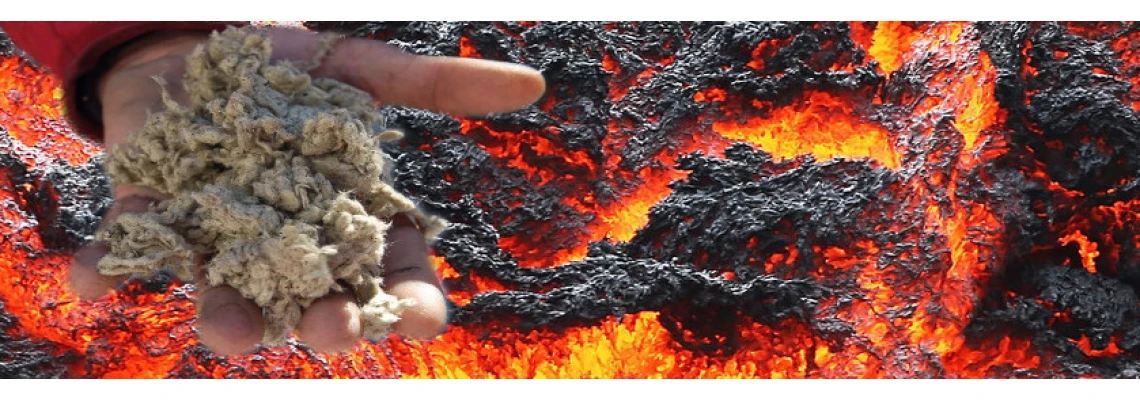
All you should know about Mineral wool*
When we talk about mineral wool we have a choice of two types - rock wool and glass wool. Let's see what the differences between them.
Each of them has different parameters. Other ingredients are used in the production of these materials.
- Stone wool is made of basalt - volcanic rock melted at a temperature of over 1400 ° C!
- Glass wool requires glass cullet together with quartz sand, which is smelted at a slightly lower temperature, approx. 1000-1200 ° C.
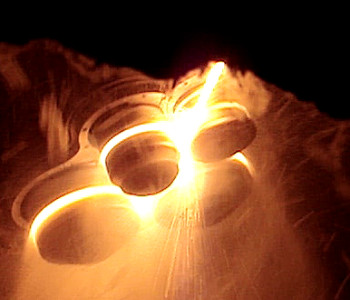
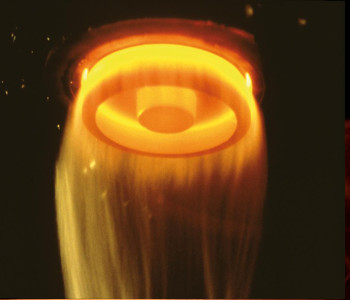
Both types of wool are good for sound insulation. In the case of fire resistance, these two types also work well - both have the highest fire resistance class - A1-S1-d0.
Stone wool is composed of raw materials of volcanic origin, so you can expect its excellent resistance to high temperatures, and even to direct contact with fire. For this reason, it can serve as an effective fire barrier, simultaneously serving as thermal and acoustic insulation.
Often, stone wool insulation boards are heavier than glass wool. Rock wool has a higher density and is therefore more durable, therefore, under heavy loads, this type of mineral wool will work better.
On the other hand, glass mineral wool, as it has a lower density, can be better compressed than stone wool - compressed to reduce its volume.
Glass wool is more efficient. It has a lower density - thanks to this, it insulates better and is more flexible, which allows you to transport more. In case of high loads, it is recommended to use stone wool, it also has a slightly higher resistance to fire. Both types are recommendable. Currently, there are no better materials for room insulation on the market than glass wool and rock wool.
Who discovered wool?
It is worth knowing that the idea for the technological process of mineral wool production was taken from the phenomenon of nature.
This wool was discovered during the study of active volcanoes on the tropical islands of the Pacific Ocean.
Under the influence of high temperature - over 1500 degrees Celsius, during a volcanic eruption, thin basalt fibers mixed with the air and turned into a material similar to unprocessed wool. The insulating properties of the resulting substance were quickly noticed and a similar material began to be produced industrially.
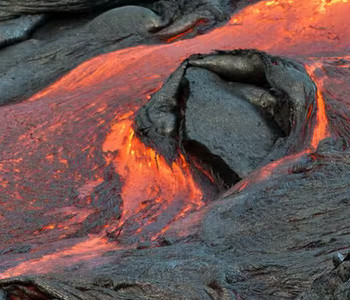
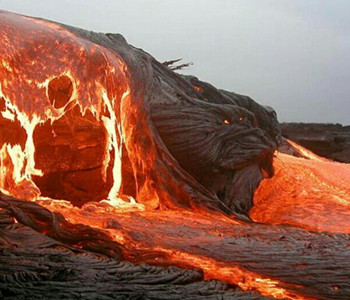
What is Mineral Wool?
Mineral wool is an insulating material made of natural raw materials.
Stone wool also known as mineral fiber is a fibrous, non-flammable thermal insulation material created for use as high-temperature insulation and generally defined as being resistant to temperatures above 1,000 °C
Basalt stone, coarse-grained gabbro and dolomite or limestone aggregate are used for the production of wool. They are minerals of volcanic origin. Mineral wool may contain a binding agent and an oil to reduce dusting. The raw materials from which mineral wool is produced are non-flammable. Due to the mechanical effect of fibres, Mineral wool is an excellent insulating material because there is "trapped" air between the basalt or glass fibers. The fibrous structure of wool causes the sound waves passing through it to be scattered and suppressed.
Does mineral wool lose its properties over time?
Properly installed wool, which has not been exposed to direct water or moisture, does not lose its parameters. Even after several decades, it has the original technical parameters.
Advantages
- Resilience and flexibility - it is very easy to lay insulation tightly, especially when insulating roof slopes
- Mineral wool can be used to soundproof rooms, creating comfortable conditions in houses and apartments
- Fire resistance and non-flammability - mineral wool has been classified in the highest non-flammability class A1.
- lighter product-less stress on the building structure.
As you can see, the advantages of using such material are huge. It is an investment that will significantly reduce our bills (which will most likely increase in the coming years).
Disadvantages
- Mineral wool products may cause temporary skin itching – crumbles and dusty when cutting. It is therefore recommended to use protective clothing ( masks, gloves, glasses ) during work.
- Wet wool loses its thermal insulation properties so it does not fulfill the basic task - it does not insulate external partitions. In addition, then it may cause the structural elements to get wet ( brick, rafters )
- Thin fibers may melt (at very high temperatures)
Wastage
During its production, in the technological process, almost 100% of waste of these raw materials returns to the production cycle.
How is it sold?
Mineral wool is usually in the form of slabs, batts and rolls. Products with higher density (heavier) are used where higher mechanical insulation parameters are required.
Importantly, as the weight of mineral wool increases, the fire resistance of the elements in which it is used increases. It is sold in the form of characteristic yellow pull-out rolls or as hard slabs and batts intended for direct assembly.
| One cubic meter of stone or glass produces about 60 m3 of finished mineral wool products |
If you are looking for materials to insulate your home, please visit our online store, specifically our category with mineral wool. Do not wait and check our range.
*All the information provided in the content published on Insulationgo blog is for informational and educational purposes only. Insulationgo LTD makes every effort to ensure the accuracy and timeliness of the content, but we do not assume any responsibility for any errors or omissions.
The information presented on this blog should not be considered as professional advice or a substitute for consulting relevant experts. Before making any purchase decisions or taking action based on the information presented here, it is strongly recommended to contact the product manufacturer directly to verify the details and ensure its suitability for your specific needs.
By using this blog, you acknowledge and agree that Insulationgo LTD shall not be held liable for any damages, losses, or inconveniences arising from the use or reliance on the information provided herein. This limitation of liability applies to all users of the blog, including but not limited to visitors, readers, and subscribers.










































































































